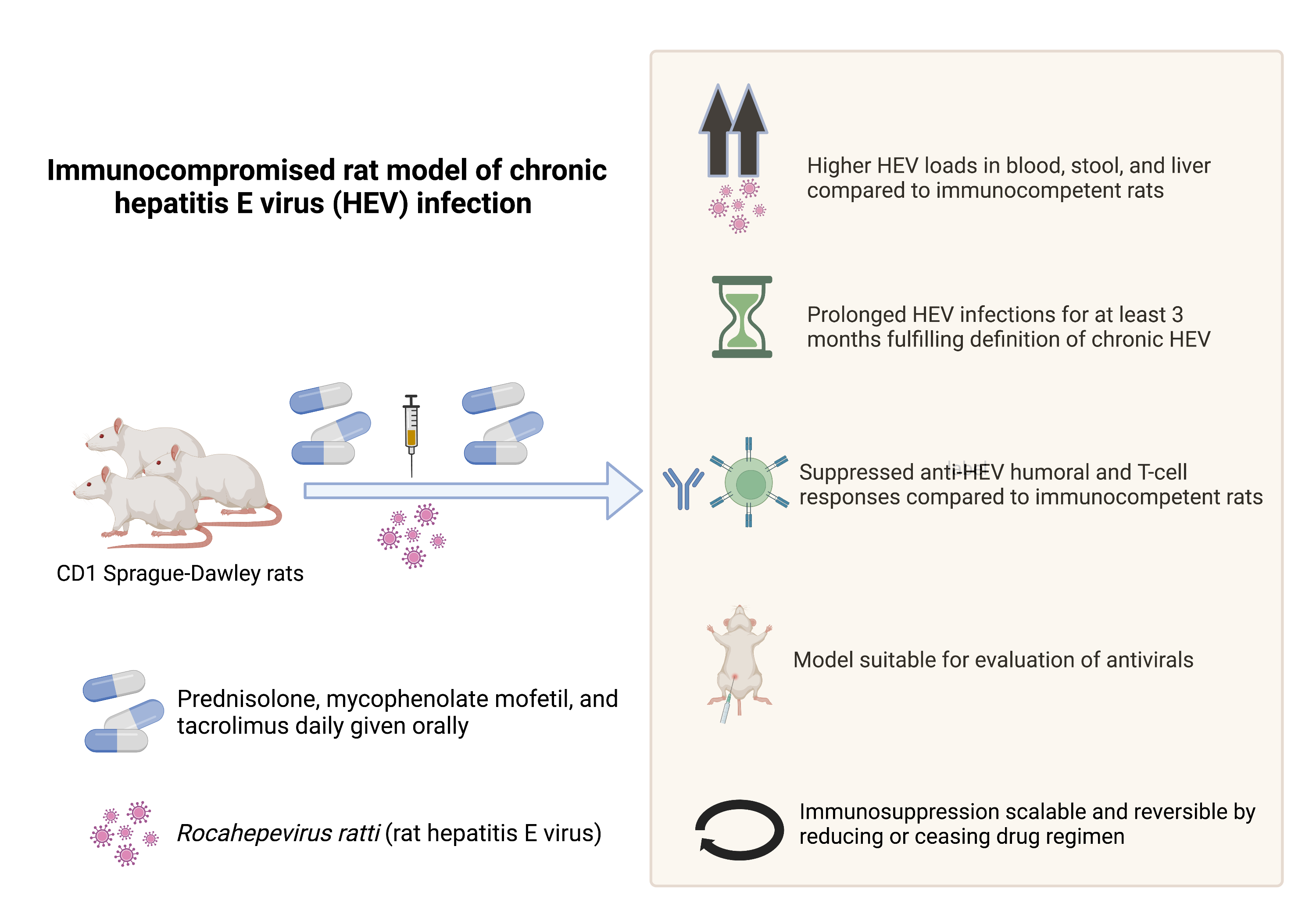Convenient small animal models of chronic hepatitis E are necessary for investigating the course of HEV infection in immunocompromised persons. Currently available small animal models for this purpose either do not consistently support chronic infection or are profoundly immunocompromised, limiting their representativeness of human infection, in which more nuanced immune suppression is typical. Rocahepevirus ratti (HEV-C) has recently been recognized as a cause of chronic hepatitis in transplant recipients. Clinical features of this infection are highly similar to Paslahepevirus balayani genotype 3 and 4 infections in immunocompromised persons. As rats are the natural reservoir of HEV-C, rats may serve as a good model system for chronic hepatitis E. However, natural HEV-C infection in rats is transient.
In a recent study, Dr Siddharth Sridhar and colleagues generated immunosuppressed rats using a combination of prednisolone, tacrolimus and mycophenolate mofetil (commonly used immunosuppressants in transplant recipients). Immunosuppressed rats were then infected with HEV-C strains and were able to support persistent HEV infections for durations considered confirmatory of chronic hepatitis E. High viral loads in stool, serum, and liver tissue were observed compared to control immunocompetent animals. Antibody and cell mediated immune responses to HEV were abrogated, but could be partially restored by reducing dosages of immunosuppression. Scalability of immunosuppression is another benefit of this model as reduction of immunosuppression is considered the first step in treatment of chronic hepatitis E in humans. The model could also be used to investigate antiviral responses. However, a drawback of this model is that it does not support HEV-A infections. Determinants of differential susceptibility of rats to HEV-A and HEV-C infections deserves further investigation.
In conclusion, this immunocompromised rat model is a convenient surrogate for non-human primates or pigs for modelling chronic hepatitis E.
Read the full article (JHEP Rep. 2022 Aug 10;4(10):100546): DOI: 10.1016/j.jhepr.2022.100546

